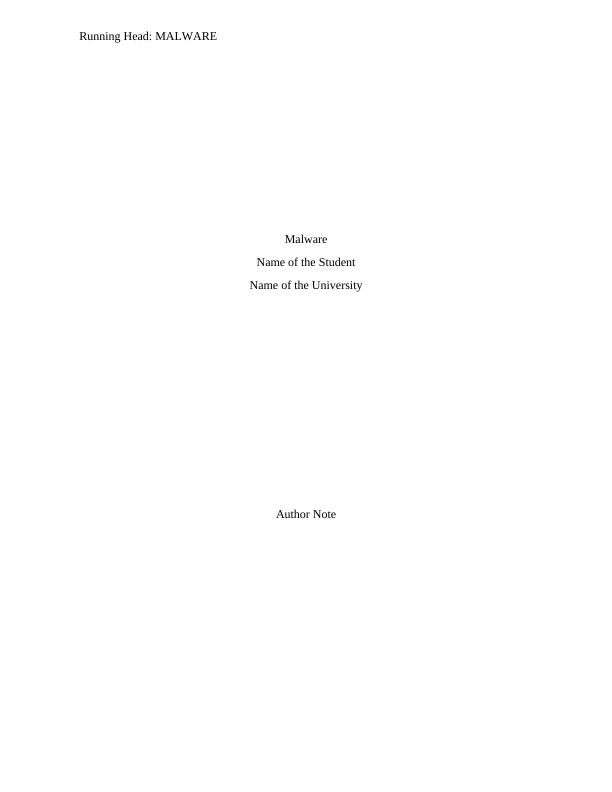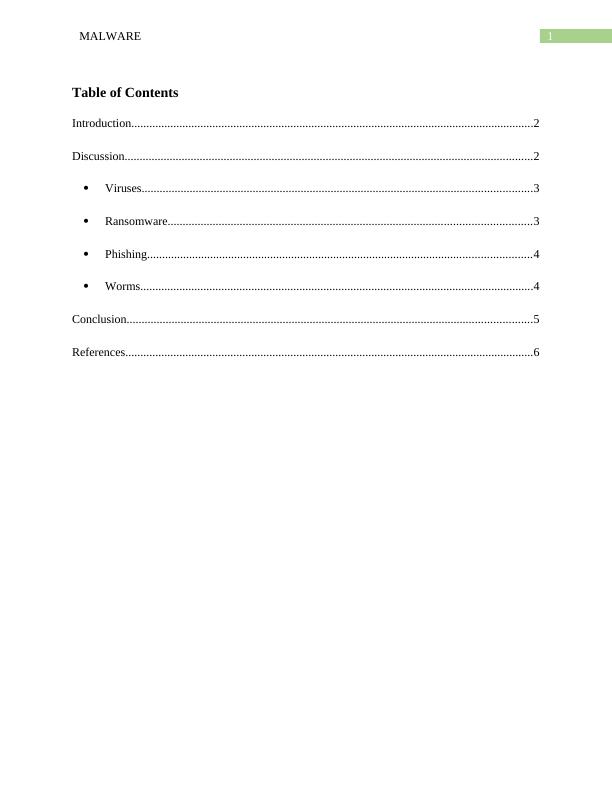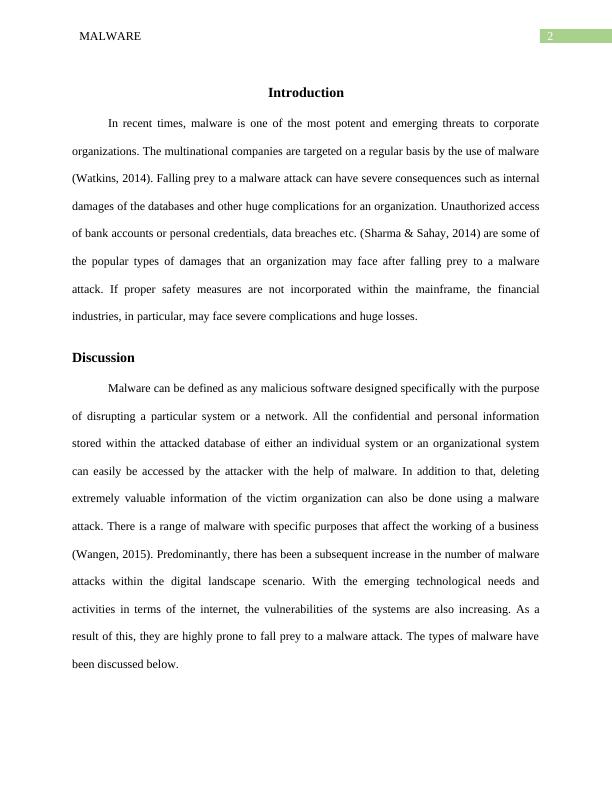Malware: A Threat to Corporate Organizations
8 Pages1336 Words400 Views
Added on 2023-03-30
About This Document
This document discusses the threat of malware to corporate organizations. It explores the different types of malware, such as viruses, ransomware, phishing, and worms, and their impact on businesses. The document also highlights real-life examples of malware attacks and the consequences faced by affected organizations.
Malware: A Threat to Corporate Organizations
Added on 2023-03-30
ShareRelated Documents
End of preview
Want to access all the pages? Upload your documents or become a member.
Understanding SQL Injection, Insider Attacks, and Malware Threats for Enhanced Cybersecurity
|7
|2711
|157
Malware Research Analysis 2022
|6
|1205
|19
IS Security and Risk Management Assignment PDF
|10
|3410
|84
Crime-ware and Malware-Based Business Assignment
|12
|3635
|89
Malware Analysis Assignment PDF
|29
|6377
|378
Report on Recent and Current Trends in Malware
|13
|2836
|266



